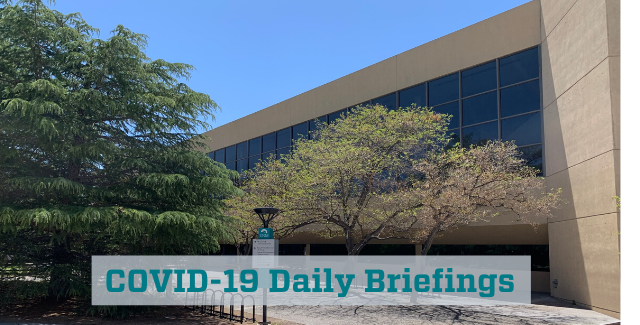Document Type
Brief
Publication Date
5-4-2020
Abstract
Executive Summary:
NM convalescent plasma call. NM case counts. Gallup lockdown continues. Tribal federal relief delay. Childcare demand drops. Polling open for primaries. Non-US world funds R&D. South Korea eases more. Soft quarantine inefficiency. Chinese interventions. Transmission window. December French case. CDC on law enforcement, essential errands. NEJM on telemedicine. Practice guidelines for: ECMO, pneumonia, nuclear medicine SOP. FDA antibody test restrictions. Africa testing differences. PCR assay sensitivity. Wuhan antibody tracking. Hydroxychloroquine toxicity. Remdesivir mechanism. Tocilzumab study inconclusive. SARs-CoV-2 structure. 28 new trials. Immunology and exercise. Synthetic SARS-CoV-2. IgM and IgG responses. Bacterial and fungal coinfection. Youth mental health challenges.
Recommended Citation
Lambert, Christophe G.; Shawn Stoicu; Ingrid Hendrix; Lori D. Sloane; Mari Anixter; Anastasiya Nestsiarovich; Praveen Kumar; Nicolas Lauve; Emma Wolinsky; Fiona Nguyen; Melissa Cossé; Allison Price; Hannah Dowdy-Sue; Ryota Shimada; Susie Pham; Ariel Hurwitz; Alexandra Yingling; Elly Munde; Perez Olewe; Cristian Bologa; Gregory Mertz; Kristine Tollestrup; Orrin Myers; and Douglas J. Perkins. "2020-05-04 DAILY UNM GLOBAL HEALTH COVID-19 BRIEFING." (2020). https://digitalrepository.unm.edu/hsc_covid19_briefings/26


Comments
Disclaimer: The UNM Global Health COVID-19 Briefing is provided as a public service. Sources include not only peer-reviewed literature, but also preliminary research manuscripts that have not been peer reviewed along with lay news media reports. The peer-review process often results in manuscript improvement, with corrections made for errors and unsubstantiated conclusions being corrected. Furthermore, many headlines and summaries in the briefing are written by student volunteers and others who may lack subject matter expertise in this rapidly evolving field. As such, the headlines and summaries should not be regarded as conclusive. Instead, readers are encouraged to use the briefing to identify areas of interest and then use the embedded links to read and critically evaluate the primary sources.